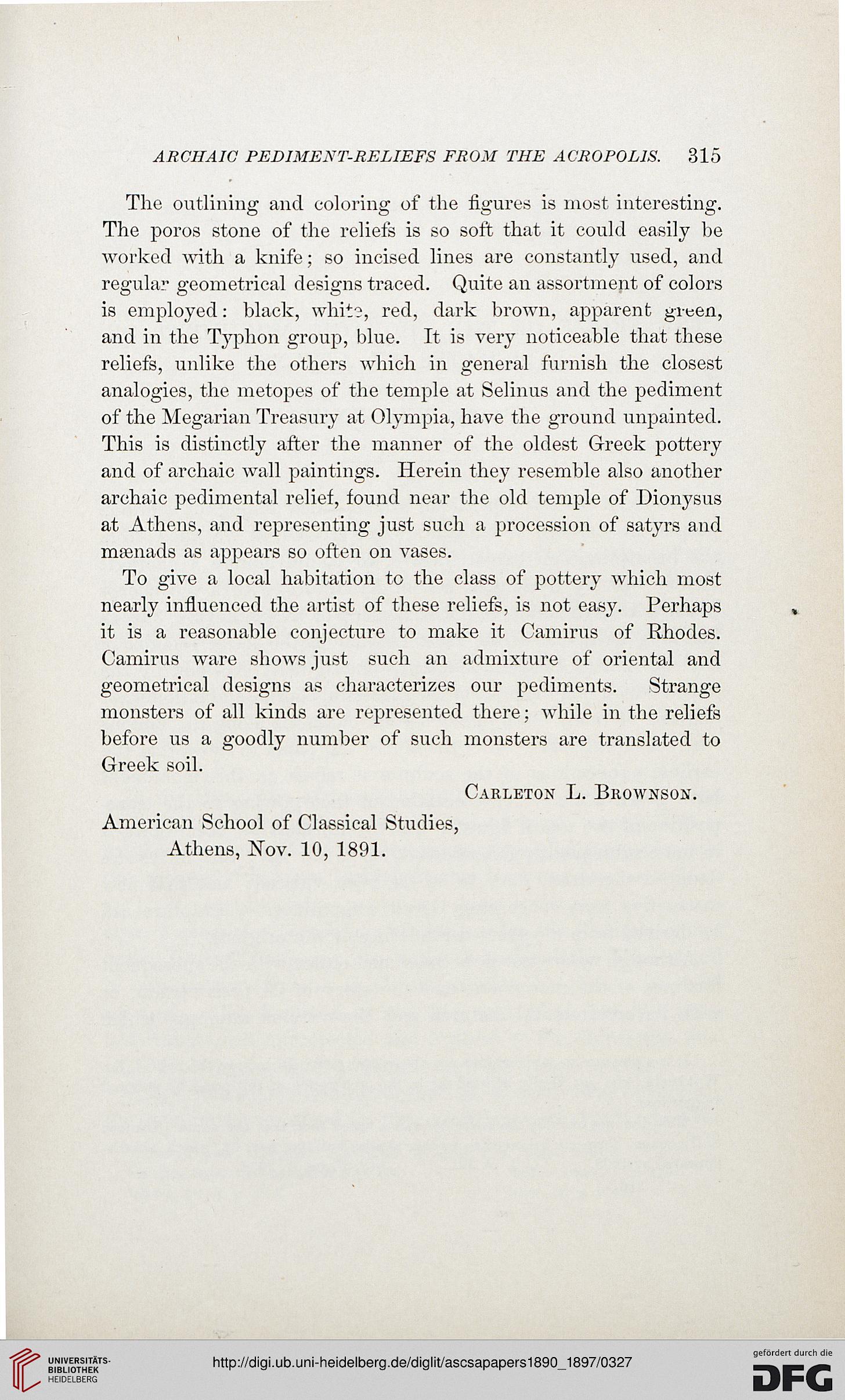ARCHAIC PEDIMENT-RELIEFS FROM THE ACROPOLIS. 315
The outlining and coloring of the figures is most interesting.
The poros stone of the reliefs is so soft that it could easily be
worked with a knife; so incised lines are constantly used, and
regular geometrical designs traced. Quite an assortment of colors
is employed: black, whits, red, dark brown, apparent green,
and in the Typhon group, blue. It is very noticeable that these
reliefs, unlike the others which in general furnish the closest
analogies, the metopes of the temple at Selinus and the pediment
of the Megarian Treasury at Olympia, have the ground unpainted.
This is distinctly after the manner of the oldest Greek pottery
and of archaic wall paintings. Herein they resemble also another
archaic pedimental relief, found near the old temple of Dionysus
at Athens, and representing just such a procession of satyrs and
mrenads as appears so often on vases.
To give a local habitation to the class of pottery which most
nearly influenced the artist of these reliefs, is not easy. Perhaps
it is a reasonable conjecture to make it Camirus of Rhodes.
Camirus ware shows just such an admixture of oriental and
geometrical designs as characterizes our pediments. Strange
monsters of all kinds are represented there; while in the reliefs
before us a goodly number of such monsters are translated to
Greek soil.
Carleton L. Bkownson.
American School of Classical Studies,
Athens, Nov. 10, 1891.
The outlining and coloring of the figures is most interesting.
The poros stone of the reliefs is so soft that it could easily be
worked with a knife; so incised lines are constantly used, and
regular geometrical designs traced. Quite an assortment of colors
is employed: black, whits, red, dark brown, apparent green,
and in the Typhon group, blue. It is very noticeable that these
reliefs, unlike the others which in general furnish the closest
analogies, the metopes of the temple at Selinus and the pediment
of the Megarian Treasury at Olympia, have the ground unpainted.
This is distinctly after the manner of the oldest Greek pottery
and of archaic wall paintings. Herein they resemble also another
archaic pedimental relief, found near the old temple of Dionysus
at Athens, and representing just such a procession of satyrs and
mrenads as appears so often on vases.
To give a local habitation to the class of pottery which most
nearly influenced the artist of these reliefs, is not easy. Perhaps
it is a reasonable conjecture to make it Camirus of Rhodes.
Camirus ware shows just such an admixture of oriental and
geometrical designs as characterizes our pediments. Strange
monsters of all kinds are represented there; while in the reliefs
before us a goodly number of such monsters are translated to
Greek soil.
Carleton L. Bkownson.
American School of Classical Studies,
Athens, Nov. 10, 1891.





